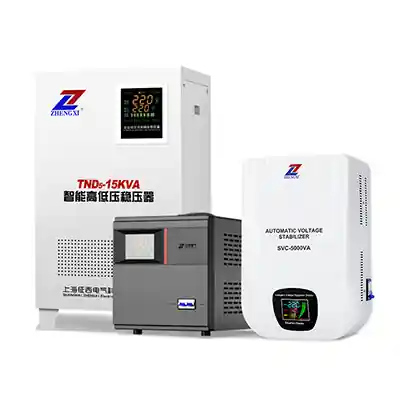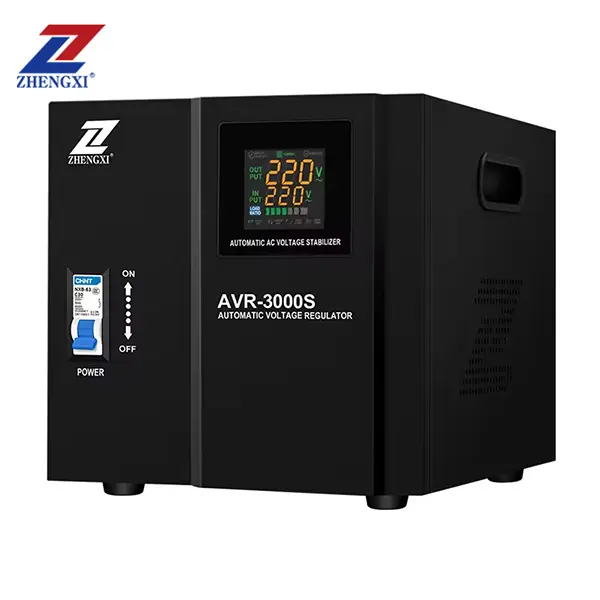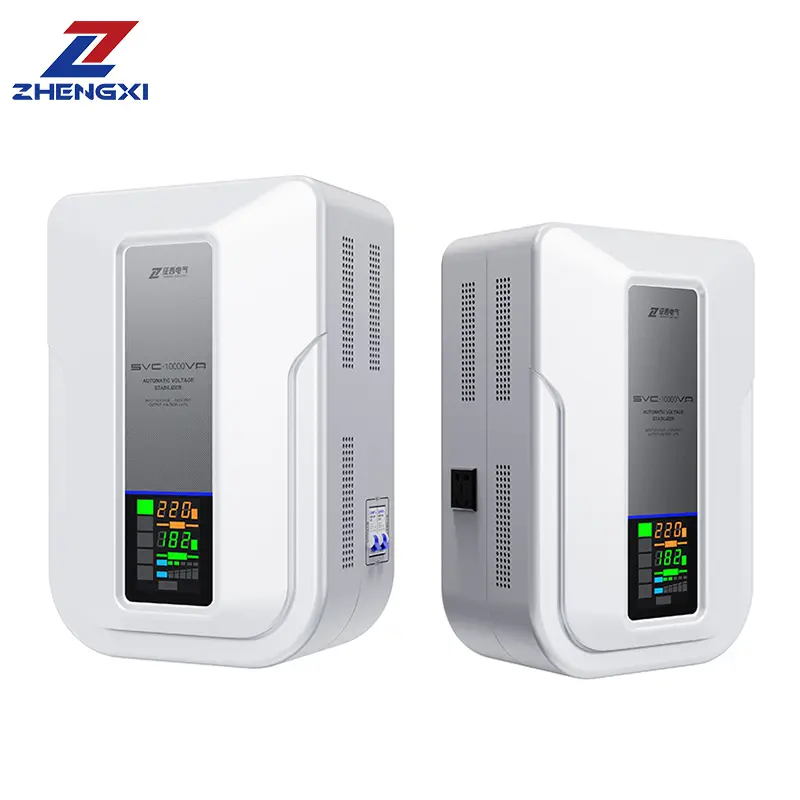1. Introduction: Why Voltage Stability Matters
Whether in a small apartment or a heavy‑duty factory, voltage fluctuations can wreak havoc—damaging compressors in air conditioners, burning microchips in computers, or halting production lines. An electrical stabilizer, also called an automatic voltage regulator (AVR), acts as a guardian, ensuring your devices always see the “sweet spot” of voltage they need.
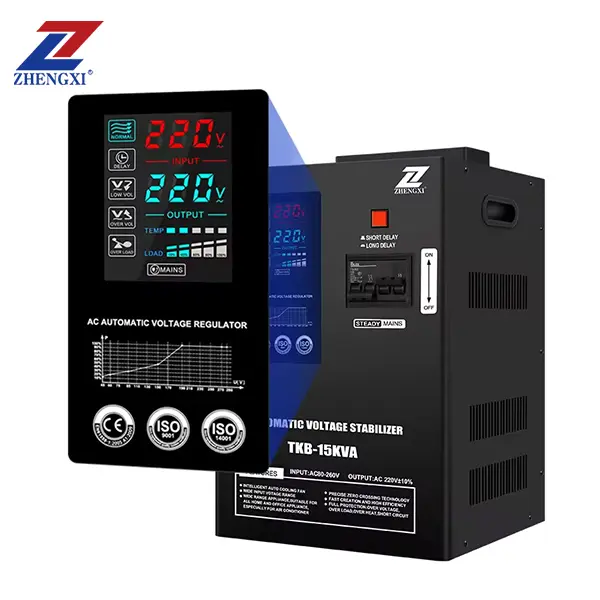
2. Electric Stabilizer vs. Voltage Converter: Key Differences
Many users confuse stabilizers with step‑up/step‑down converters. Here’s how they differ:
| Feature | Stabilizer (AVR) | Converter (Transformer) |
|---|---|---|
| Purpose | Maintain constant output voltage | Change voltage level up/down |
| Response | Milliseconds (servo/static type) | Instantaneous but fixed ratio |
| Application | Protection against ± fluctuation | Adapt voltage for different mains |
| Common Use | Home appliances, industrial loads | Traveling appliances, legacy gear |
3. How an Electrical Stabilizer Works
- Voltage Sensing: Continuously measures incoming mains.
- Error Detection: Compares sensed voltage against a preset “nominal” range (e.g., 220 V ±10%).
- Correction Mechanism:
- Servo‑Type: A motor adjusts transformer taps for precise output.
- Static Type: High‑speed semiconductor switches boost or buck voltage.
Even a 10 ms delay can make the difference between safe operation and a blown circuit board.
4. Types of Electrical Stabilizers
Relay‑Type Stabilizers
- How it works: Mechanical relays switch taps.
- Best for: Small home appliances (TVs, small refrigerators).
- Pros/Cons: Affordable but slower response (~100 ms).
Servo‑Controlled (Motorized) Stabilizers
- How it works: DC motor shifts transformer winding taps.
- Best for: Precision equipment (CNC machines, lab instruments).
- Pros/Cons: Highly accurate (±1%), but larger footprint.
Static (Solid‑State) Stabilizers
- How it works: IGBT or TRIAC‐based switching.
- Best for: Offices, home theaters, network servers.
- Pros/Cons: Ultra‑fast (<20 ms), compact; slightly higher cost per kVA.
Digital Servo Stabilizers
- How it works: Microprocessor controls servo motor.
- Best for: Critical applications requiring monitoring & logging.
- Pros/Cons: Digital display, remote communication; premium price.
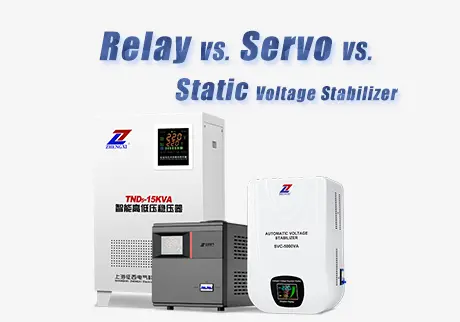
5. Critical Features & Specs to Compare
- Capacity (kVA): Match to total appliance load + 20% buffer.
- Input Voltage Range: Wider ranges (e.g., 100–300 V) handle unstable grids.
- Response Time: Faster correction reduces stress on electronics.
- Efficiency / Power Loss: Look for ≤3% standby losses.
- Display & Alerts: LED/LCD readouts, phase‑failure & overload alarms.
- Safety Protections: Overload, short circuit, surge, phase reversal.
- Certifications: IEC, CE, RoHS, ISO9001 ensure quality & compliance.
6. Installation & Maintenance Best Practices
- Site Selection: Cool, ventilated, dust‑free area away from direct sunlight.
- Wiring: Use appropriately sized cables; secure all connections per local electrical codes.
- Earthing: Proper grounding minimizes noise and protects against lightning.
- Periodic Checks (Every 6–12 months):
- Inspect for dust & debris.
- Verify tightness of terminal screws.
- Test response by simulating low/high voltage conditions.
7. Real‑World Case Study: Protecting a CNC Workshop
Challenge: Frequent power dips led to CNC mill shutdowns, costing 2 hours/day in downtime.
Solution: Installed a 45 kVA digital servo stabilizer with ±1% accuracy and real‑time monitoring.
Result: Zero unscheduled stops in 6 months; ROI achieved in under 4 months through increased productivity.
8. Top Applications & Use Cases
- Home & Residential: Refrigerators, microwave ovens, smart TVs.
- Office & Commercial: Computers, servers, medical equipment.
- Industrial: Welding machines, compressors, laser cutting systems.
- Specialty: Telecom towers, renewable energy inverters, laboratory analyzers.
9. Troubleshooting Common Issues
| Symptom | Possible Cause | Recommended Action |
|---|---|---|
| No output despite input power | Blown internal fuse | Replace fuse, check overload |
| Output voltage drifts slowly | Dirty/slipped servo contacts | Clean contacts, recalibrate |
| Overload alarm constantly on | Load > stabilizer capacity | Reduce load or upsizing unit |
| Frequent relay clicks (relay‑type) | Rapid voltage oscillations | Add time‑delay feature or switch to static type |
10. FAQ
Q1. What is an electrical stabilizer used for?
An electrical stabilizer ensures sensitive devices receive a constant voltage, protecting against both under‑voltage and over‑voltage events.
Q2. Can I use a stabilizer for my air conditioner?
Yes—choose a stabilizer rated 20–30% above your AC’s kVA rating to handle startup surges.
Q3. How do I size a stabilizer for multiple appliances?
Add up the total wattage (or VA) of all connected devices, then add a 20% safety margin when selecting kVA capacity.
Q4. What’s the difference between single‑phase and three‑phase stabilizers?
Single‑phase units (220–240 V) suit homes and small offices; three‑phase units (380–415 V) are designed for industrial machinery.
Q5. Do stabilizers consume a lot of power?
Modern stabilizers exhibit low standby losses (typically 1–3%), so operational power consumption is minimal.
Q6. How often should I service my stabilizer?
A general rule is every 6–12 months—inspect wiring, clean dust, and verify calibration.
Q7. Are digital stabilizers better than analog?
Digital stabilizers offer precise control, data logging, and remote monitoring, which can be invaluable for mission‑critical applications.
Q8. Can stabilizers protect against lightning strikes?
While stabilizers include surge protection, consider dedicated lightning arrestors or whole‑building surge protectors for comprehensive defense.
Ready to safeguard your equipment with industry‑leading voltage regulation?
Explore SUNWAY’s full lineup of single‑phase, three‑phase, servo, and static stabilizers—backed by ISO9001, CE, and RoHS certifications, plus worldwide OEM/ODM support.

